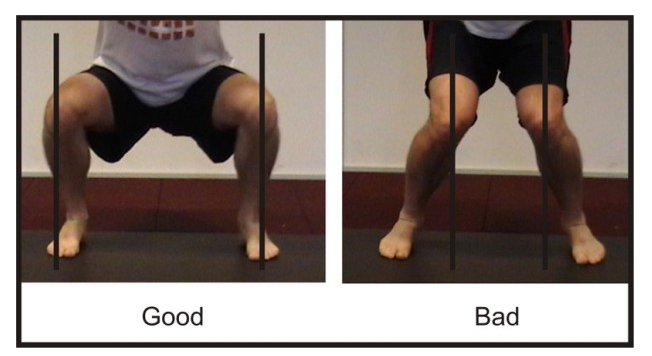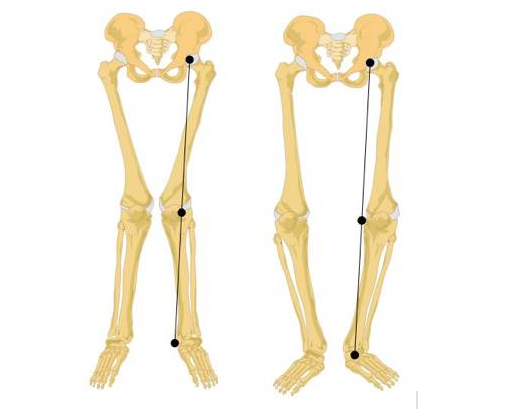
Why “Knees Out” might not be the Best Cue when Squatting
Written by Kim McLaughlin
Squatting is one of my favorite things to do. I love squatting and I love squatting heavy. When we squat in CrossFit, it’s not uncommon to hear coaches throw the “knees out” cue at athletes who have their knees caving in at any point in their squat – going down, in the bottom, or on the way up. Let’s break down that “knees out” cue, though. What exactly do we mean by “knees out?” There’s more behind those words than simply changing the angle of our knees.
Looking at the picture below, it’s easy to see that the anatomy of the leg does, in fact, look to be in a more natural and safer position in the drawing with the knees outward versus the knees inward. Simply turning the knees out is not enough. The idea behind pushing the knees out is to create torque. Some people mistake the cue of “knees out” to mean “turn the foot out”. This is NOT the correct thing to do. Turning the foot out will keep the knees in that outward position at the top of the squat but it will actually make it harder to create the tension and torque in the bottom position that we need to keep our squats safe.

By forcing the knees away from the midline (essentially where the “knees out” cue comes from), the idea is to activate the muscles that set the knees, pelvis, and lumbar spine in a safe position. This starts well above the knee, though. It starts at the hips. If we rotate the femur in the hip socket, it forces the knees into that outward position and it automatically creates torque when we keep our feet in our initial squatting position. The torque is important because it creates an active arch in the foot, forces the knee into a natural angle, keeps the proper muscles under tension for the movement and allows for a strong AND safe position under heavy loads.
If the “knees out” cue is not relaying the message we want, here are some other helpful cues that might be used to replace the old one. Think about:
- rotating the femur out from the hips
- tearing an imaginary piece of paper apart with your feet
- screwing the feet into the ground
One of my personal favorites is to “apply constant force to the lateral heel.” The lateral heel can be defined as the area on the outside of the foot where the arch meets the heel. The pressure in this area not only creates the torque we need to stay safe in the squat but it also helps to keep the heels on the ground and keep us from shifting into the toes at any point. Stay tuned for a future video with an easy drill that can be used to train athletes to focus on this constant pressure in the outside heel when squatting.
Coincidence. We were discussing this topic today and did some specific exercices for not turning our feet outside to compensate our knees. And did some drills for our knees out. Those were so heavy.
I totaly agree that cue “knees out” should be implement but as a weightlifter it’s difficult, or even imposible to go out when the bar starts to “gain” weight :). For bodyweight or KB squat yes, but for barbell, i think that it should be individualized.